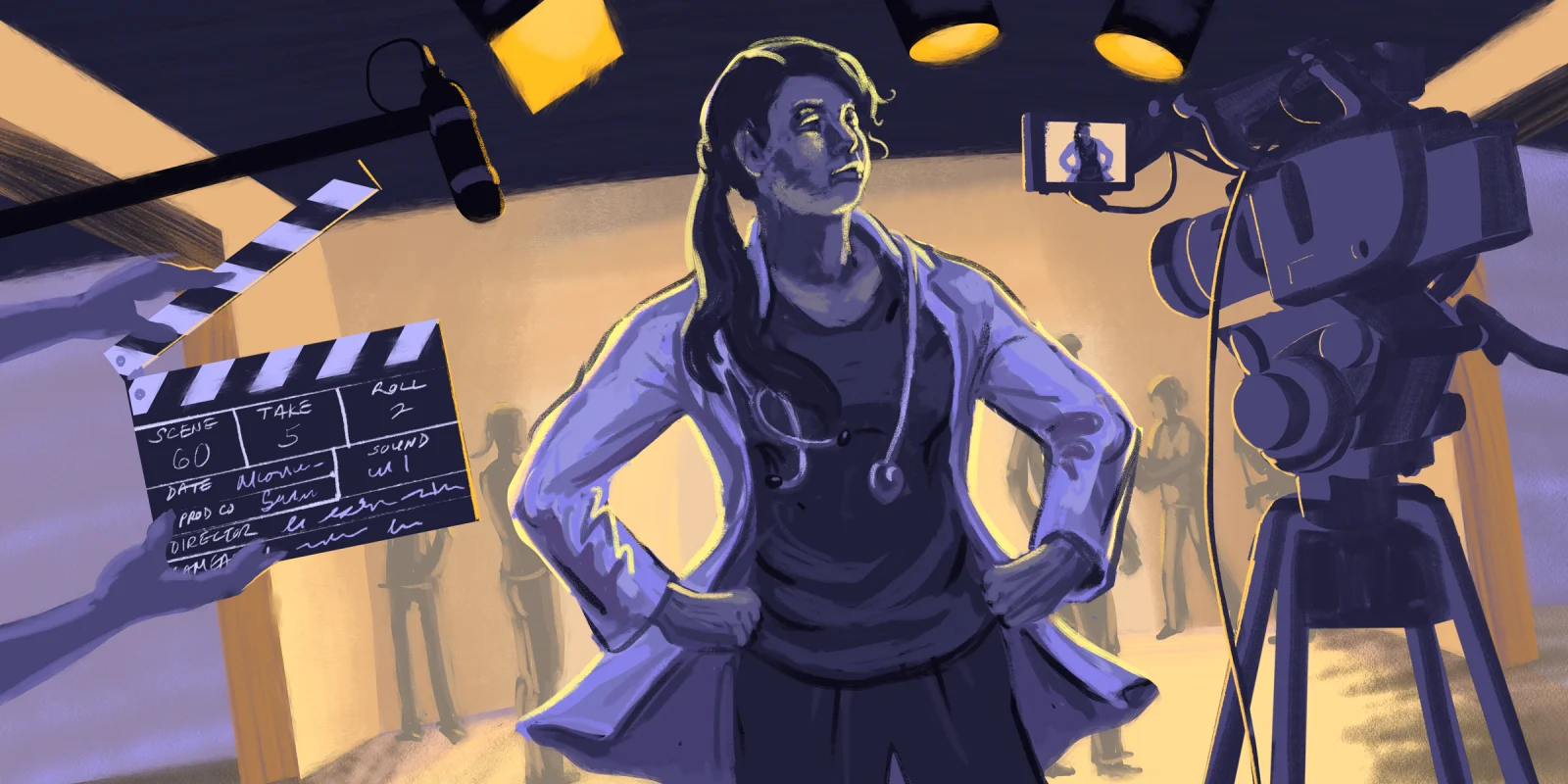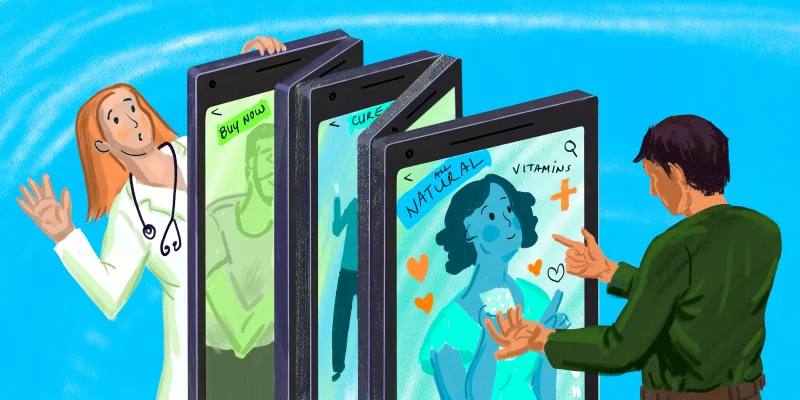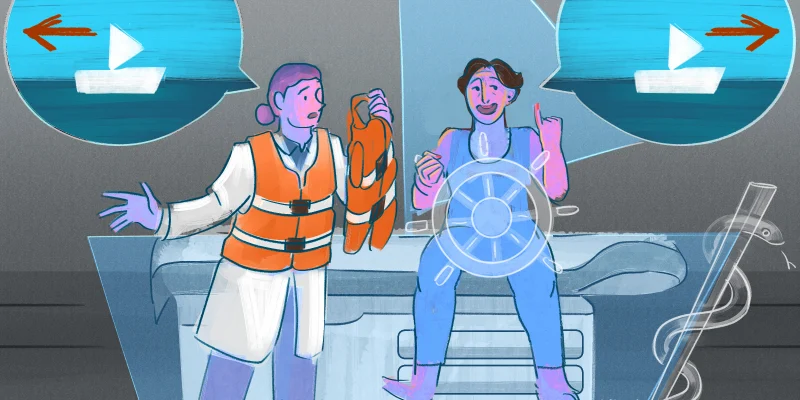It was the kind of New England summer where the air clung to the skin, thick and sticky with the heat. The concrete platform baked in the sun, and I had to squint to see the rails vanishing behind a curve in the tracks. A subtle squeal in the distance crescendoed louder as the train pulled into the station, swiftly followed by the acrid scent of the hot brakes. It was a relief to board and feel the cool air of the conditioned cabin. Amid this environment was my first exposure to Michael Crichton’s “Jurassic Park.” As a teenager commuting into Boston every morning for summer camp, I had picked up a frayed copy of the book for a dollar to keep me company on the train ride. But it didn’t matter how humid it was outside, because from the moment the train started rolling and I began flipping the pages, I was somewhere else entirely.
Outside the window, the world blurred into a rush of green — not just a warm summer green, but a deep, saturated green whose vividness felt ancient and alive. We slipped by stretches of forests, punctuated by marshlands with scattered skeletal trees, their bleached limbs reaching out from the swampy brush. In my mind, suburban Massachusetts gave way to the world of Isla Nublar. “Jurassic Park” was the first book where I was terrified to turn the page, but simultaneously couldn’t stop myself from doing so. It was gripping for how lucidly it folded science into suspense. I honestly half-expected to catch a glimpse of a raptor scurrying between the trees. It just felt so possible ... and I looked. My eyes kept sneaking off the page and toward the window, searching. That was the power of the writing.
At the time, I didn’t know that Michael Crichton had gone to medical school, or that years before writing “Jurassic Park” in 1990, he had written the original screenplay for “ER” in 1974. A physician-turned-writer, Crichton was well known for suffusing his medical perspective into the realm of popular culture through novels, TV shows, and, of course, films. Years later, when I heard about “The Pitt” — a new medical show tied up in a lawsuit from Crichton’s estate accusing it of being an unauthorized “ER” reboot — and saw a YouTube video from Dr. Mike praising its realism, I was curious. The Crichton connection caught my attention. The praise for its authenticity made me actually watch it. In the midst of relentless studying, it was a refreshing take on the profession and a glimpse into the wards.
“The Pitt” was so different from the usual medical procedurals, the likes of “Grey’s Anatomy,” “Scrubs,” “House MD,” “The Good Doctor,” or “The Resident.” Roshan Sethi, a physician and one of the original writers of “The Resident,” in apt timing, had just given a virtual talk at our medical school’s Beyond the Hospital elective where he lamented the limitations of network television: the tidy resolutions, the black and white morality, the crass surgeons, the lawless detectives, and the stereotypical casting. By the time he left, the show was flattened into seductive archetypes that work well with mass audiences — a far cry from the rich nuance and messy challenges of real medicine. But that’s Hollywood, he noted. Hence my surprise when watching “The Pitt.” It felt different because it felt real. There weren’t any soapy romances, no outlandish scenarios, just the daily grit of the physicians, nurses, and even medical students, going through their day treating patients one by one.
I felt that I could walk down the hall to the actual ER and see all the same things in person, albeit certainly not within the same day. “The Pitt” plays like a greatest hits highlight reel, compiling all of the most interesting or dramatic patient cases that a doctor might see over a year’s worth of shifts into each jam-packed hour. In Episode 4, the intern, Dr. Santos, puts a patient with a traumatic chest injury and rib fractures on positive pressure ventilation. On the heels of our respiratory unit, I was literally yelling at the screen, “No, no! He’s going to get a tension pneumothorax!” It’s a classic dramatic take in a medical show, and in due course my reflex was prescient. This time, I was in on it. In the first episode, a triathlon athlete comes in with weakness and malaise. My instinct was hyponatremia, but I didn’t quite make the connection to rhabdomyolysis as a more seasoned physician might. When the patient crashes, the attending asks the chief resident, Dr. Collins, for a differential. She suggests drug overdose, electrolytes, long QT, Wolff-Parkinson-White. Hey, I know what these are now! These words are no longer gibberish. The team, headed by the attending, Dr. Robby, performs an EKG, finding widened QRS complexes, peaked T waves. Of course, it turns out to be hyperkalemia from rhabdomyolysis. Even before they suggested it, I thought to myself, “I would give insulin for this to drive the potassium into the cells.” For the first time, I could watch a medical show as someone on the inside. “The Pitt” stands out, not because it’s perfect, but because it feels grounded and sincere in its depiction of modern emergency medicine. It feels visceral.
The drama is faithful. Authentic drama is best expressed through the vernacular of insiders, argues David Mamet, a screenwriter and fellow pilot. In his illuminating essay, “The Drama of Flight,” he claims that the best aviation writing is not found in the purple prose of Antoine de Saint-Exupéry, but in flying magazines where “pilots are communicating, in technical language, the drama that took place: ... difficulties, happenstance or error compounded by laziness, fatigue, ignorance or pride; ignorance beaten out through near-averted tragedy; theory triumphing over fear, or excised through practice.”
Far from being dry, this technical language made up of abbreviation, pauses, omissions, and cadences is allusive, even poetic. Its gestures, silences, and shorthand are charged with meaning, containing the weight of fear, fatigue, pride, and competence in just a few words. As such, it’s deeply expressive for those fluent in it. Mamet made this observation while flying solo over the desert of the western U.S., where long hours listening to air traffic radio chatter revealed a staggeringly intimate drama unfolding between strangers in the sky. A slight inflection from the air traffic controllers could, to those fluent in the language, communicate disapproval, apprehension, or warning. “There was the drama one could detect, in the competence of the commercial and military pilots, the result of endless hours; in the private pilots, the relaxed and often folksy diction and vocabulary of the old-timer, the confusion and, sometimes, the apprehension or fear of the [novice].” To make sense of this radio play, he argues, you just have to be able to speak the language.
That same attitude toward the language of medicine is embodied by “The Pitt.” Doctors across America feel heard, going so far as to say: “That’s exactly what happens. That’s exactly what that looks like. That’s exactly the words that I would say if I were in that situation.” In this case, the realism isn’t just a gimmick. Rather, realism is what allows the drama that is inherent to the profession to be teased out, dissected, and laid bare on the table. This fidelity to the real world, including the one-to-one timeframe, is purposeful. In a conversation on “The Nocturnists” podcast, Joe Sachs — one of the show’s principal writers and a practicing EM physician himself — discusses his process. The medical cases are chosen specifically to serve the story, they get us to “learn more about the characters and their relationships with each other,” and I might add, to Mamet’s point, the characters’ relationships with themselves. That narrative approach to authenticity is key. The job of the writer isn’t to devise increasingly elaborate scenarios, but to identify which clinical cases naturally allow for character growth. It resonates with those in medicine because we’ve seen those very cases shape who we are, too.
Sachs offers a great example, in Episode 7, where a patient with autism presents with an ankle sprain. This case wasn’t included because the world needs more awareness about ankle injuries, but because it gave Mel, a second-year resident, an opportunity to contrast with other characters. As Sachs explains, her character needed a chance to “show her incredible skills at patient care and compassion ... as opposed to Langdon, who had no patience, no time, and was doing everything wrong.” The accurate clinical reasoning — her differential including dancer’s fracture vs. Jones fracture, and their respective abilities to heal — wasn’t just about being technically correct. It reflected Mel’s ability to hear the patient’s story, ask thoughtful questions, and make sense of the clinical picture with both curiosity and care. The case highlights Mel’s character as an empathetic physician, one who could get “through to the patient in a way that Langdon never could.” What resonates with physicians is how vividly the show captures the real world journey of growth. The character development that unfolds over years of medical training are distilled into moments that feel honest and earned, mirroring our own experiences with the same richness.
“The Pitt” doesn’t explain itself; it doesn’t translate the medicine for the viewer’s benefit. It dares to use the real language of medicine, the technical jargon. Perhaps “The Pitt” feels so real to me because this time I finally know the language; I’m an insider. I’m not quite fluent, but I can certainly understand the basics. Like any modern show wanting to be in vogue, “The Pitt” still has the occasional heavy-handed moral didactics and social commentary. However, the show insists that good drama can be found even in faithful narratives about patient care. The showrunners consciously chose to avoid the sultry charm of McDreamy, the Sherlock-level sleuthing of House, or the absurdist caricatures and meta-commentary of J.D.’s lampooning satire, and chose to engage with us in the bona fide language of medicine; the one that we speak among one another.
To those working in the ED, it’s the first show that they can point to and say to their friends and family, “That’s what it’s like at work.” For Joe Sachs, that kind of reaction is personal validation. As he puts it, other physicians have said: “For years, I’ve tried to tell my friends, my family, my significant others, what it’s like to work a shift, and I’ve never been able to put it into words before, and I never have been able to give a sense of what it’s really like. And now that the show’s on the air, they can watch it, and I can say, 'Yes, that’s what I do.’” Of course, “The Pitt” isn’t 100% accurate — no show is really willing to depict the sheer number of hours physicians spend staring at a computer screen. Cinema is, after all, meant to explore a heightened sense of reality. It still must be entertaining. We still want to see more of the “old-school heroics” of medicine, sans note-writing.
What’s striking is that it still works for people outside medicine. The show doesn’t pause to decode its terms or slow down for melodramatic story beats. It trusts that the layperson will catch the rhythm, if not the exact content, and sense the stakes in the tone, the urgency, and the chaotic choreography of people moving through clinically lit set pieces. In essence, it’s a sneak peek into the hermetic environment of the modern ER, with all the same real stakes. The show suggests that perhaps what audiences crave in modern medical shows isn’t sensationalism or more soapy romantic sagas — it’s competence. In a cultural moment when trust in institutions has faltered, audiences revel in watching professionals speak fluently and act decisively to save lives. That’s what “The Pitt” gets right.
If you’ve seen “The Pitt,” how well do you think it captures life in medicine? Share in the comments.
Sahil Nawab is a medical student at UMass Chan Medical School in Worcester, MA. He is an avid aviation enthusiast and private pilot who enjoys exploring the world from many unique perspectives. Sahil was a 2024-2025 Doximity Op-Med Fellow.
Illustration by Jennifer Bogartz







